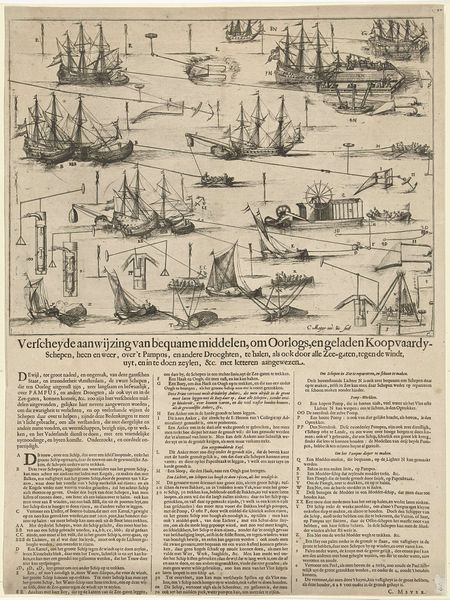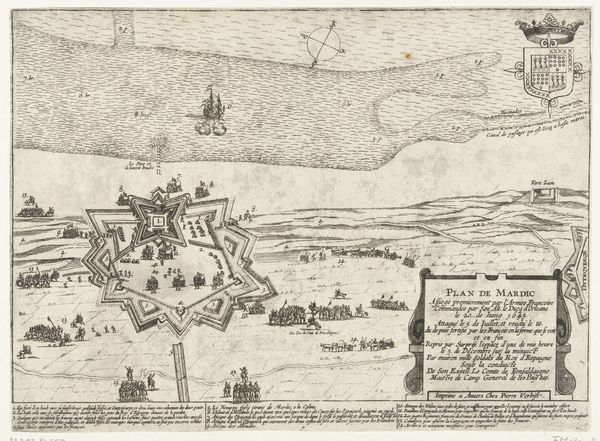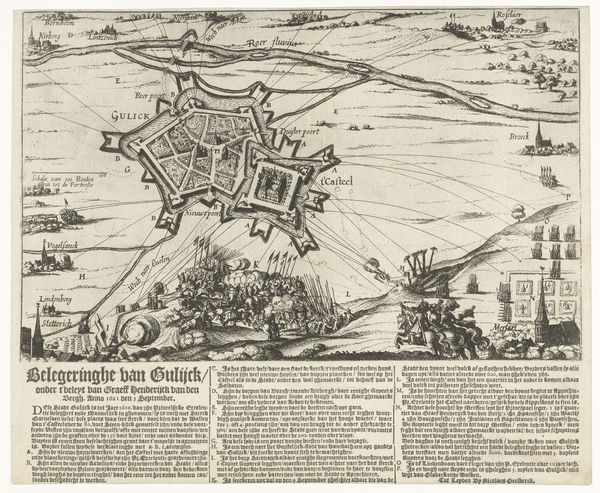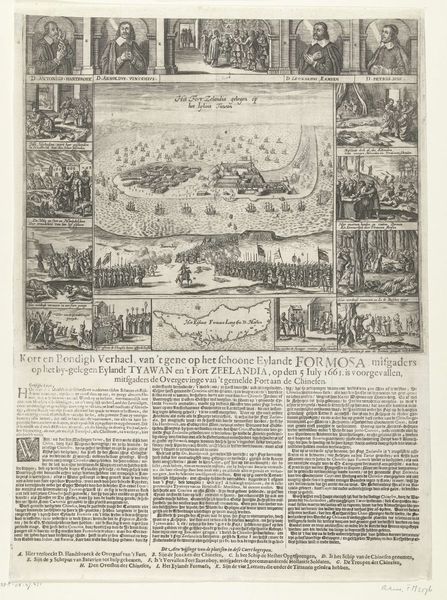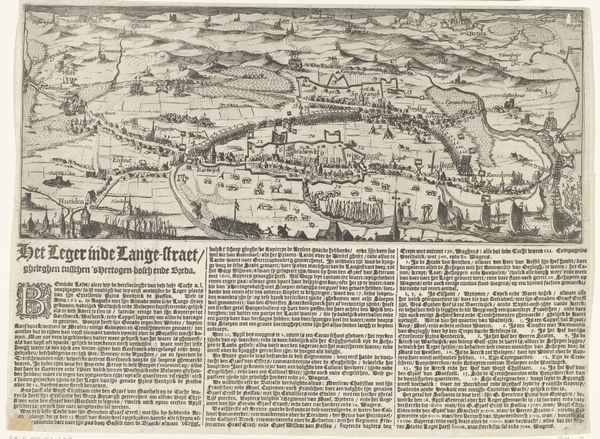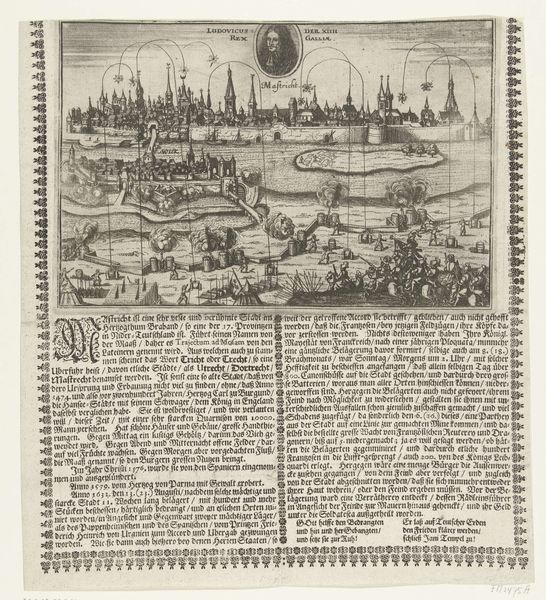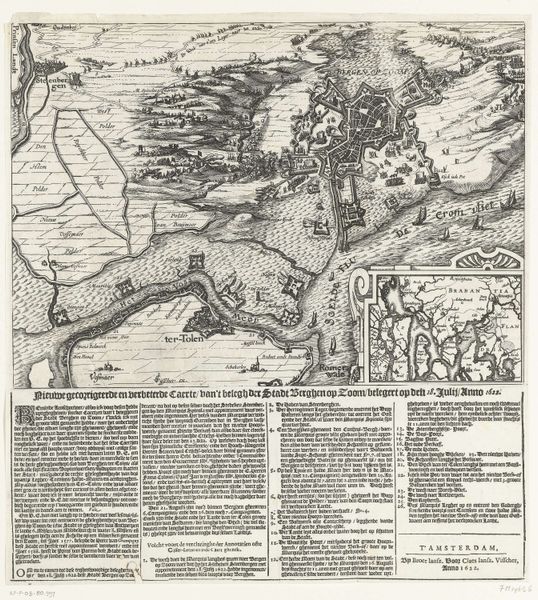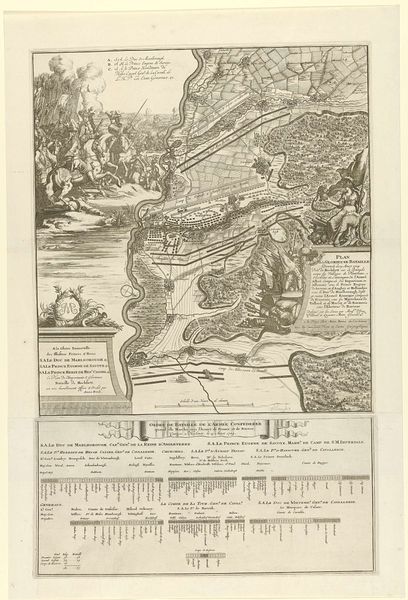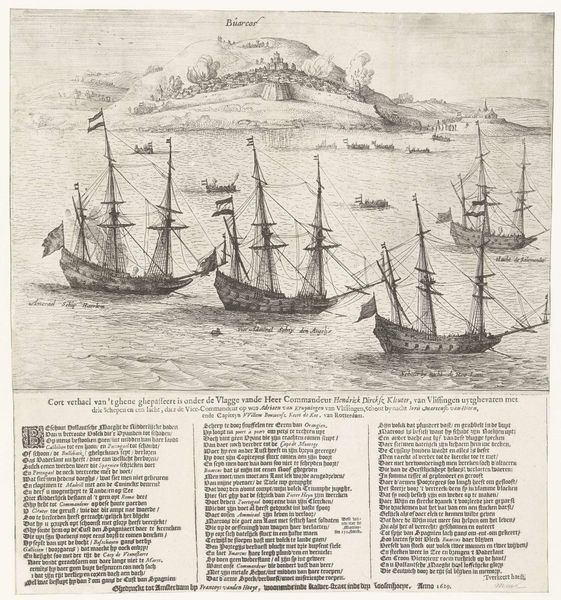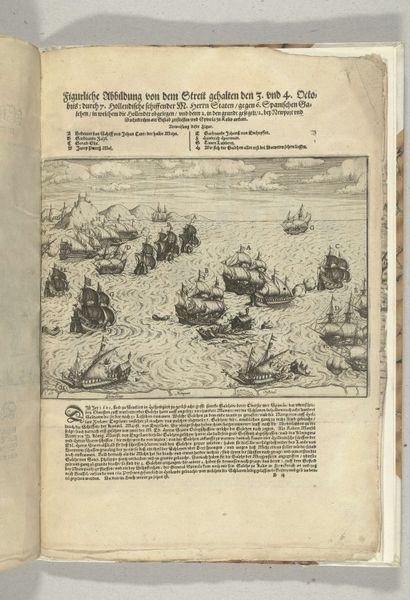
print, engraving
#
baroque
# print
#
landscape
#
cityscape
#
engraving
Dimensions: height 428 mm, width 362 mm
Copyright: Rijks Museum: Open Domain
Curator: I am immediately struck by the density of information packed into this image. There’s almost a claustrophobic feeling conveyed by the closely-packed details. Editor: Well, this engraving, created in 1622 by Dirk Eversen Lons, titled “Siege of the Papenmuts Sconce”, is exactly that: dense with information about a very specific moment in history. What are you drawn to particularly? Curator: The depiction of power, perhaps. It's fascinating how it frames war as urban planning, where fortifications are reduced to shapes on a map. We’re meant to understand it intellectually, not emotionally. Do you find that clinical detachment disturbing? Editor: The 'clinical' aspect is a byproduct of the medium: an engraving meant to document and disseminate military information. Think about the labor involved, though – the skilled hand meticulously etching these lines onto the copperplate, and the subsequent reproduction of many copies. This process speaks to a specific investment of material and energy into this event. Curator: Absolutely. And that investment comes with ideological weight. Look at the choice to represent this "siege" from a detached, almost God-like perspective. It sanitizes the violence and promotes a specific narrative of Dutch military prowess. I'm always interested in how art manipulates our perception of war and trauma, especially through this type of landscape rendering. Editor: For me, it emphasizes how even these calculated displays are material acts. The engraver transformed an event of war into an object intended to be traded and understood through touch. The texture of the lines, the ink on the page... these are direct results of this human need to control territory and knowledge, expressed physically. Curator: Precisely! We have these neat little shapes, almost abstract representations of fortifications and siege strategies. And then below it all, we’re invited to contemplate the broader societal structures that reinforce these representations and their political justifications. Editor: Right, by studying how an engraver fashioned this artifact, and who would see it, we’re closer to uncovering its complex purpose beyond simply presenting an aerial depiction of battle.
Comments
No comments
Be the first to comment and join the conversation on the ultimate creative platform.

